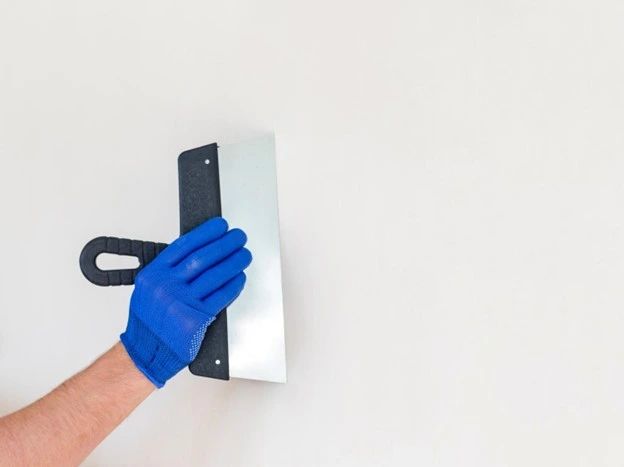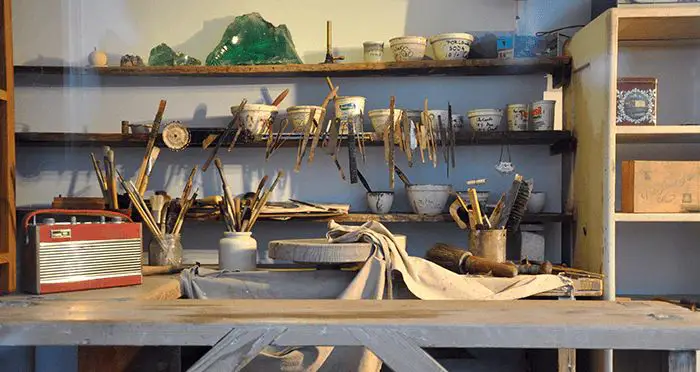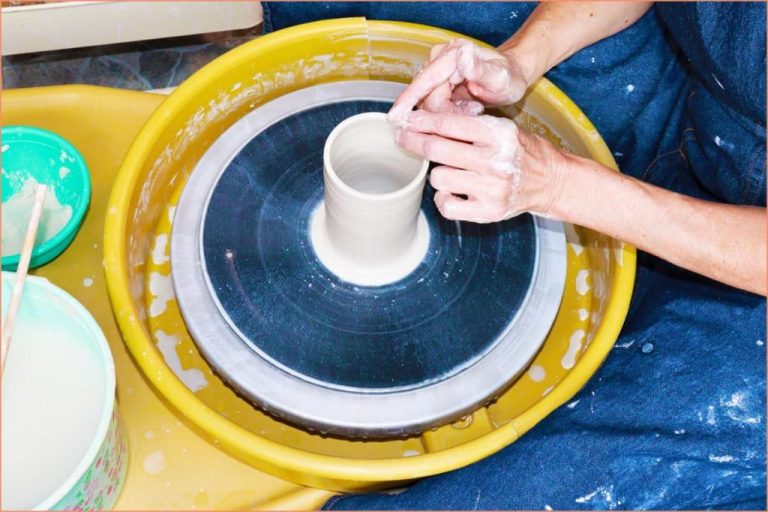What Is A Metal Scraper?
What is a Metal Scraper?
A metal scraper is a hand tool used to remove material from a surface by scraping. The main uses and purposes of metal scrapers include removing old paint, adhesive, rust, dirt and debris from various surfaces such as metal, wood, concrete and glass.
There are several different types of metal scrapers designed for specific applications:
- Paint scrapers – Used to remove old paint and varnish from surfaces before repainting. They have a sharp, rectangular blade.
- Floor scrapers – Designed to remove debris, dirt, grease from floor surfaces. They have an angled blade.
- Gasket scrapers – Used to scrape gasket material from machinery and engines during maintenance. They have a curved, hooked blade.
- Weld scrapers – Used to clean welded seams and remove excess welding material. They have a triangular blade.
Metal scrapers are commonly made from hardened tool steel which maintains a sharp edge but is resistant to damage. Other materials used include carbide steel, stainless steel and brass.
History
The history of metal scrapers dates back thousands of years to ancient times when early civilizations first began working with metal. Metal scrapers were some of the earliest metal tools developed by humans for cleaning animal hides and shaping wood and bone. According to the Cohen, the use of scrap metal and rudimentary metal recycling began as early as 400 BC.
Early metal scrapers were made of copper, bronze and later iron. They often had a flat blade or curved blade attached to a handle made of wood, bone or antler. Over time, blacksmithing allowed for stronger steel scrapers. Key innovations included the development of draw knives with two handles for wood shaping and spoke shaves for more delicate woodwork.
The 19th century brought more advanced metal working techniques and machine-powered scrapers. Modern scrapers are made from high carbon steel or carbide steel for durability. Improvements like ergonomic handles and interchangeable blades make contemporary scrapers highly effective and specialized tools.
Design and Parts
Metal scrapers come in many designs, but generally consist of a sturdy metal blade with a handle attached. The key design elements include:
- Blade – Usually made of stainless steel for strength and corrosion resistance. Can be straight, curved, hooked, or serrated depending on the scraping application.
- Handle – Often made of wood, plastic or rubber for grip. Can be short or long. May include a guard to protect hands.
- Tang – The part of the blade that extends into the handle. Provides stability.
- Ferrule – A metal band securing the handle to the tang.
For heavy duty industrial uses, the blade may be much larger and thicker, with a very sturdy handle. Smaller scrapers for more delicate tasks may have thinner, more flexible blades. Specialty scrapers are designed for specific jobs – like removing paint, gaskets, or flooring.
Scrapers used outdoors often have handles coated in rubber for wet conditions. Ergonomic handles provide more comfort for extended scraping tasks. Heated scrapers have an electrical heating element in the blade to soften materials.
Uses
Metal scrapers have many useful applications around the home, job site, and workshop. Some of the most common uses include:

Cooking and baking – Scrapers are handy for scraping dough off surfaces when making breads and pastries. They can also be used to transfer chopped foods from a cutting board into pots and pans.
Arts and crafts projects – Scrapers work well for scraping paint or glue off surfaces. They can also assist in sculpting and carving materials like clay, wax, and soap.1
Yard and garden work – Gardeners use scrapers to break up and turn over soil, remove weeds, harvest root crops, and perform other digging tasks. They are also handy for scraping mud off tools and equipment.
Automotive maintenance – Mechanics rely on scrapers to remove gasket material, brake pad deposits, rust, and old adhesives during auto repairs. They allow for cleaning parts down to bare metal.
Construction and home improvement – Scrapers pry off flooring, scrape away old paint and glue, remove mortar between bricks, and assist in prep work for laying tile, hardwood, or laminate flooring. They speed up demolition and surface preparation jobs.2
Advantages
Metal scrapers have several key advantages that make them a useful tool for many tasks. According to Tampa Steel, their strength and durability make them very effective for scraping, smoothing, and cleaning.
The rigid metal blade can scrape off even tough stuck-on material from surfaces. Metal scrapers easily remove paint, adhesive, rust, and more from metal, wood, concrete, and other hard surfaces. Their durability allows them to stand up to heavy scraping without bending or breaking.
Metal scrapers are also very easy to use. The angled blade and comfortable handle allow you to bear down and apply force as needed. The thin profile lets you get into tight spots and corners.
Finally, metal scrapers are quite affordable. Simple scrapers can cost just a few dollars. They provide an inexpensive solution for many DIY and industrial tasks where heavy-duty scraping is needed.
Disadvantages
Though metal scrapers are useful and versatile tools, they do have some downsides, including:
Metal scrapers can damage surfaces if used improperly. Applying too much pressure or scraping at an angle can cause scratches or gouges in the surface being worked on. Proper technique is required to avoid marring the material underneath.1
Scraping requires physical effort. Unlike powered alternatives like grinders or sanders, manual scraping relies solely on elbow grease. Those with medical conditions or limited mobility may find the labor intensive work challenging.2
Scrapers have limited versatility compared to some powered tools. While handy for removing stuck on materials, paint, rust, etc., their functionality is narrow compared to grinders, wire brushes, or other electric/battery powered options.
Maintenance
Proper maintenance is crucial for metal scrapers to keep them functioning at their best. Here are some key maintenance tips:
Cleaning and storing the scraper properly helps prevent rust and corrosion. Make sure to remove any dirt, debris, or residue after each use and wipe the blade dry. Store in a clean, dry area. Applying a thin coat of oil helps protect against rust as well.
Over time, the scraper blade will dull with repeated use. Periodically sharpening the edges with a file or sharpening stone ensures it can scrape effectively. Look for nicks or rounded edges along the blade and focus sharpening efforts there. Avoid overheating the steel during sharpening which can damage the metal. Refer to the manufacturer’s sharpening guidelines.
Finally, inspect your scraper and replace any worn out parts as needed. Things like loose or damaged handles, bent blades, worn rivets, etc. can affect safety and performance. Replacing expendable parts preserves your scraper and prevents more extensive damage. Consult the manufacturer instructions for proper replacement parts and procedures. How To Clean & Organize Metal
Safety Tips
When using a metal scraper, it’s important to follow some basic safety tips:
Use caution on surfaces that can be damaged. Metal scrapers have very sharp blades that can scratch or gouge materials like wood, plastic, and tile if used carelessly. Take care when scraping near walls, cabinets, appliances etc.
Wear gloves to protect your hands. Gloves provide protection if the blade slips while scraping. Thick work gloves made of leather or other sturdy materials are best.
Store safely when not in use. Retract the blade completely and keep in a drawer or cabinet out of reach of children. The sharp edge can cause serious cuts if handled incorrectly.
See Egansupply.net for more safety tips on using metal scrapers.
Popular Brands
When it comes to popular metal scraper brands, some of the top manufacturers include Stanley, QEP, Homax, Hyde, and Goldblatt. These companies offer a wide range of scrapers for both professional and DIY use.
Stanley is one of the leading brands when it comes to hand tools and offers a variety of basic scrapers for tasks like removing paint and glue as well as more heavy duty options. Prices range from $5-$20 per scraper. QEP offers scrapers with unique features like extendable handles and prices from $10-$30.
Homax scrapers are known for their ergonomic soft-grip handles and sell for $5-$15 each. Hyde and Goldblatt focus more on heavy-duty scrapers for professionals with advanced blade designs and sturdy frames. Their prices tend to be higher, from $30 up to over $100.
These top metal scraper brands can be found at home improvement stores like Home Depot and Lowes. They’re also available from online retailers like Amazon and hardware stores like Ace Hardware. When choosing a brand, consider your needs and budget.
The Future
The future looks bright for metal scrapers as new materials and designs emerge. Companies are exploring lightweight composite materials like carbon fiber to improve durability while reducing weight 1. These innovative materials could enable the development of ergonomic handles and attachments to reduce strain on users.
Manufacturers are also experimenting with connected scrapers that provide real-time feedback to optimize efficiency. Built-in sensors could track metrics like the thickness of materials removed and force applied 2. Scrapers may even integrate with augmented reality glasses to overlay critical data during use.
Looking ahead, metal scrapers will continue improving industries like construction, manufacturing, and recycling. Advances in robotic arms and AI could enable autonomous scraping and material removal. With a focus on performance, safety, and sustainability, the humble scraper seems poised for an innovative future of potential applications and uses.



